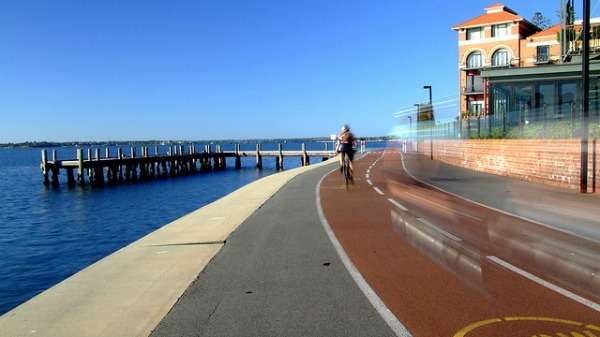Dr Peiffer’s key to healthy summer exercising include listening to your body and keeping a stable core body temperature. Credit: Edward
Drinking excessive amounts of water before exercising and drenching your clothes are myths that local researchers suggest Perth athletes ditch this summer.
The suggestions are in line with fluid-intake guidelines developed last year by a group of international experts including St John of God Murdoch Hospital emergency physician Professor Ian Rogers to combat Exercise-Associated Hyponatremia (EAH).
An emerging problem, particularly in sports, EAH is brought on by drinking too much fluid—'hyper-hydration'—which causes concentrations of sodium and potassium to plunge below the body's normal level of 135mmol/L.
Mild symptoms include nausea, vomiting and confusion, while more extreme cases lead to cerebral edema and death.
The key to good hydration is simple, Prof Rogers says, follow your thirst.
"There are physiological sensing mechanisms in place to prompt you when to drink which should guard against excessive dehydration," Prof Rogers says.
"Earlier published recommendations to begin drinking before thirst were largely meant for situations where sweating rates were high and dehydration would rapidly increase over time.
"Unfortunately, this has fostered the misconception that thirst is a poor guide to fluid replacement and has led to inadvertent over-drinking and EAH."
This includes the death of a young American footballer in 2014 who took in five litres of intravenous fluid and three litres of sports drink within five hours.
Bodyweight indicates healthy fluid levels
Weighing yourself before and after exercise is a good way to monitor fluid loss, according to Prof Rogers and Murdoch University Exercise Science researcher Dr Jeremiah Peiffer.
"If your weight is down, you might need to drink more," Dr Peiffer says.
However, Prof Rogers cautions you shouldn't weigh more after a workout, as this may indicate excessive intake.
Dr Peiffer's keys to healthy summer exercising include listening to your body and keeping a stable core body temperature.
"People need to be aware that on 37–38oC days, the body's ability to dissipate heat is impaired, because there's nowhere really for the heat to go," he says.
"Sweating, and particularly the evaporation of sweat, is the main way the body keeps cool, so the material you're wearing can be really important."
For intensive exercise, sportswear microfibers are ideal, as unlike cotton, which holds moisture, they are fast-drying and designed to pull sweat from the skin.
"Drenching your clothes in water is a bad idea, as you're basically creating a tropical microclimate around your body," Dr Peiffer says.
"And while dousing yourself with water may make you temporarily feel better, it only lowers your skin temperature, not your core."
Provided by Science Network WA
This article first appeared on ScienceNetwork Western Australia a science news website based at Scitech.























